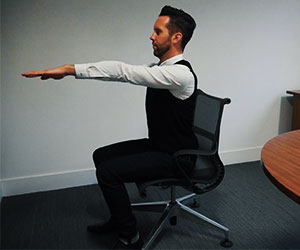I have cancer. Can I still workout?
- Overview
- Full article
- Related articles
We’ve got a better chance of surviving cancer than ever before, but treatment can take its toll. Fatigue and loss of muscle mass and can leave you feeling weak, exhausted and in no state to get back to the gym. Surgery too can limit your range of motion and lead to inactivity.
But this is precisely the time that your health and wellbeing matters most. Most people survive cancer. When it’s over, getting back to your best is infinitely easier if you don’t have to start from scratch. Everyone’s different and no one going through treatment should attempt any exercise plan without first consulting their oncologist, but here are a few tips to get you started:
Take it easy
Fatigue tends to come in waves. One day you’ll feel fine and the next you’ll be completely wiped out. Over-exercising can exacerbate this. You might feel on a high after a hard workout, but pushing it too far will only make your lows lower. It may be frustrating, but you’ll have to start slow.
Focus on form and technique
During treatment the idea is to maintain rather than improve your muscle mass. I start many of my clients off with low-resistance exercises that can be done at home. These keep your core strong through good posture and breathing patterns. They also help to restore any mobility problems caused by surgery before trying more intense exercise.
Exercise tip: Try leg and arm extensions while sitting in a chair. Sitting up straight with your arms by your sides, extend your lower leg out in front of you, alternating each leg. Keep your arms straight and raise your hands to be in line with your shoulders, alternating with arms in front and out to the side. Concentrate on your posture and breathing. You can also try standing wall push-ups. Check with your oncologist if this is right for you. If you’re recovering from surgery it’s especially important to give yourself time to heal.
Getting back to the gym
The gym is an ideal place to workout for those living with or recovering from cancer. Rebuilding lost muscle is best achieved by resistance training. Gyms are full of equipment designed specifically for this purpose. Once the muscle mass returns the gym also has everything you’ll need to recover cardiovascular fitness too. It is vitally important that you check with your oncologist before heading back to the gym. Even when you have the green light, easing into it is key.
Exercise tip: To start with, focus on full-body workouts. Your muscles will be easily over-worked, so spread the load around your body. Use a variety of weight machines working different muscles in your core, legs, and arms. Give yourself some time before moving on to free-weights. You’ll need a strong base to muster the stability needed. Free-weights and exercises like lunges and squats will help retrain movement patterns and develop coordination and balance. Keep the weight low and stay within 8 – 12 reps.
Keep your sessions short - around 20 – 30 minutes will be the maximum you can take. You can build up the sessions to around 3 or 4 a week. Be very cautious about moving beyond this. There’ll be plenty of time to go hard once you recover. Once muscle mass is stable, integrate cardio into your routine. X-trainers and exercise bikes are great low-impact machines to build your fitness on. Don’t push yourself too hard or too long. Keep it short and slow and build up over time.
Back to your old self
Once your treatment is over, there’s no reason you can’t recover or even improve on your pre-diagnosis state. A strong base fitness and muscle mass maintained throughout treatment will give you a great head start. It's all down to how much you want it. Anything's possible if you're determined enough. Getting back there is easier if you don't wait for treatment to be over.
Tom Cole is a Level 4 Personal Trainer who specialises in helping to rehabilitate cancer patients as part of Nuffield Health Cambridge’s unique oncology programme.
Last updated Tuesday 19 March 2019
First published on Thursday 7 January 2016



